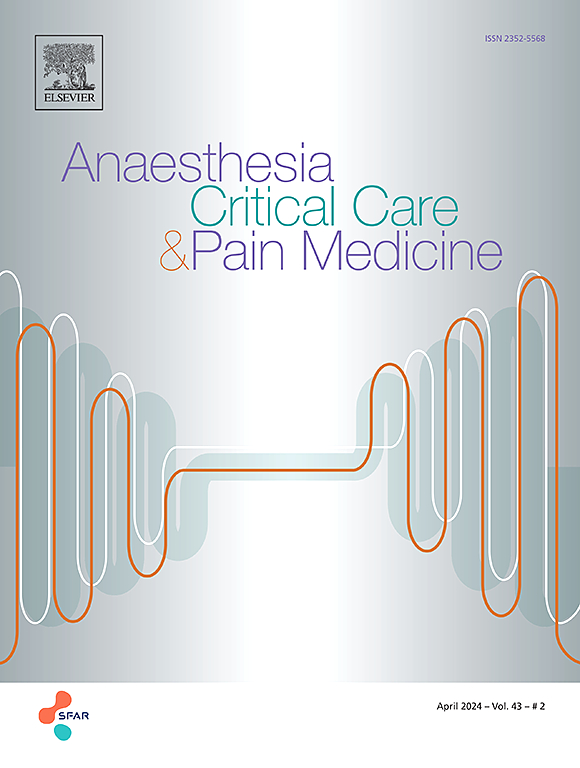Association between low income and ICU delirium among critically ill older patients: A retrospective cohort study in Japan
IF 4.7
3区 医学
Q1 ANESTHESIOLOGY
引用次数: 0
Abstract
Background
The social determinants of delirium have yet to be well-studied. We explored the association between low-income and intensive care unit (ICU) delirium among critically ill older patients in Japan, where universal healthcare coverage is provided.
Methods
This was a retrospective cohort study. Study patients included 2705 adults aged 70 years or older who were admitted to the ICU of St. Luke's International Hospital in Tokyo for a mean duration of 4.3 (SD = 6.0) days between March 2014 and April 2022. Patients classified in the low-income categories of the public health insurance system or receiving public assistance were designated as the low-income group. ICU delirium was assessed using the Confusion Assessment Method-ICU. The Cox proportional hazards model was used to estimate the associations between low income and delirium.
Results
508 patients (18.8%) were categorized as low-income. Delirium occurred in 1055 patients (39.0%) during ICU stay. After adjustment for age, sex, hearing or vision impairment, alcohol abuse, psychiatric disorders, cognitive impairment, cerebrovascular disease, and physical function, low-income showed a 1.20 times greater risk of ICU delirium (95%CI: 1.04−1.39, p = 0.014). After adjustment for potential mediators in addition to the confounding factors, low-income remained at 1.17 times greater risk of ICU delirium (95%CI: 1.01−1.36, p = 0.035).
Conclusions
In a Japanese ICU, low income was found to be an independent risk factor for ICU delirium. Future studies are needed to elucidate the mechanism of the association between low income and delirium in Japanese critically ill older patients.
低收入与重症老年患者ICU谵妄的关系:日本的一项回顾性队列研究
谵妄的社会决定因素尚未得到充分研究。我们探讨了日本提供全民医疗保险的危重老年患者中低收入与重症监护病房(ICU)谵妄之间的关系。方法回顾性队列研究。研究患者包括2705名70岁或以上的成年人,他们在2014年3月至2022年4月期间入住东京圣路加国际医院的ICU,平均住院时间为4.3 (SD = 6.0)天。低收入阶层是指参加公共健康保险或接受公共援助的低收入阶层患者。采用神志不清评定法(ICU)评定ICU谵妄。采用Cox比例风险模型估计低收入与谵妄之间的关系。结果低收入人群508例,占18.8%。住院期间谵妄1055例(39.0%)。在调整年龄、性别、听力或视力障碍、酗酒、精神障碍、认知障碍、脑血管疾病和身体功能后,低收入者患ICU谵妄的风险高出1.20倍(95%CI: 1.04 ~ 1.39, p = 0.014)。在校正了潜在介质和混杂因素后,低收入人群发生ICU谵妄的风险仍然是前者的1.17倍(95%CI: 1.01 ~ 1.36, p = 0.035)。结论在日本某ICU中,低收入是ICU谵妄的独立危险因素。未来的研究需要阐明低收入与日本危重老年患者谵妄之间的关联机制。
本文章由计算机程序翻译,如有差异,请以英文原文为准。
求助全文
约1分钟内获得全文
求助全文
来源期刊

Anaesthesia Critical Care & Pain Medicine
ANESTHESIOLOGY-
CiteScore
6.70
自引率
5.50%
发文量
150
审稿时长
18 days
期刊介绍:
Anaesthesia, Critical Care & Pain Medicine (formerly Annales Françaises d''Anesthésie et de Réanimation) publishes in English the highest quality original material, both scientific and clinical, on all aspects of anaesthesia, critical care & pain medicine.
 求助内容:
求助内容: 应助结果提醒方式:
应助结果提醒方式:


